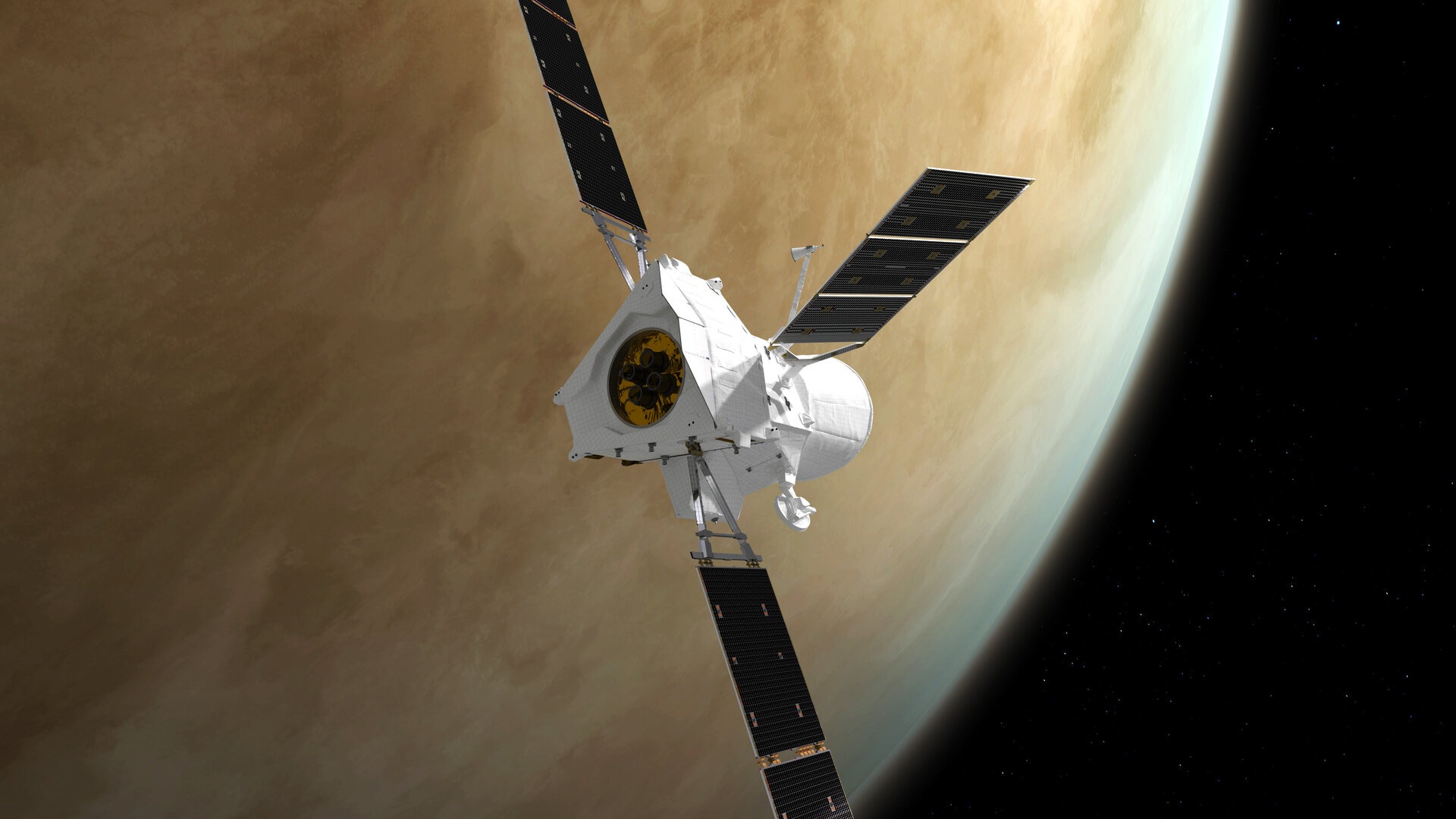Spacecraft missions to explore Solar System objects often pass by different planets to perform gravitational maneuvers to save fuel. At the same time, flying past these planets allows them to be further studied, which is not the main mission of the spacecraft. Scientists like to use such maneuvers to get as many telemetry readings as possible. A striking example of such maneuvers is the BepiColombo and Solar Orbiter spacecraft, which explored Venus.

BepiColombo is now heading towards its main goal – the planet Mercury. Solar Orbiter, in turn, explores our Sun. But it so happened that their orbits almost simultaneously cross Venus. Researchers are now combining data from both missions to learn more about Venus and its magnetic field.
Protection of Venus from the solar wind
Both spacecraft flew past Venus a few days apart in August 2021, which allowed scientists to get a view of the planet from two different positions using eight different sensors. They were particularly interested in the planet’s magnetic field, because, unlike Earth, Venus does not create its own field, but the interaction of the solar wind and its atmosphere creates something called an induced magnetosphere. Solar Orbiter observed solar winds approaching Venus, and BepiColombo observed the tail of an induced magnetic field.
Our observations of #Venus in tandem with @ESASolarOrbiter helped researchers better understand how the planet is able to retain its thick atmosphere ☁️ without the protection of a global ????magnetic field. Check the full report below ???? https://twitter.com/esascience/status/1618963532191793154
— BepiColombo (@BepiColombo) January 27, 2023
“These dual sets of observations are particularly valuable because the solar wind conditions experienced by Solar Orbiter were very stable. This meant that BepiColombo had a perfect view of the different regions within the magnetosheath and magnetosphere, undisturbed by fluctuations from solar activity,” said Moa Persson from the University of Tokyo in Kashiwa, Japan.
Researchers have found that the magnetosphere protects the planet’s atmosphere from being blown away by solar winds, which will help us better understand the conditions of existence on Venus.
Successful symbiosis
This case of simultaneous data collection also shows how valuable a bonus a maneuver can be for science when data is collected from two spacecraft flying past a planet.
“The important results of this study demonstrate how turning sensors on during planetary flybys and cruise phases can lead to unique science,” said co-author Nicolas Andre, the coordinator of the Europlanet SPIDER service at the Institute for Research in Astrophysics and Planetary Science in Toulouse, France.
Earlier we reported on how the Solar Orbiter sent an amazing video of approaching the Sun.
According to Euro Planet Society
Follow us on Twitter to get the most interesting space news in time
https://twitter.com/ust_magazine

